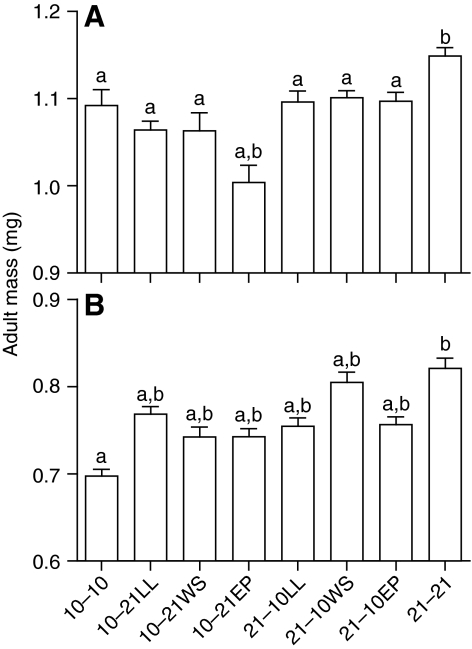Fig. 2.
Results from the first run of the CS experiments in (A) female and (B) male Drosophila melanogaster, indicating that both larval and pupal stages are oxygen sensitive. The larval to pupal oxygen switch occurred using three different protocols described in the text, with switches at the wandering stage (WS), late larval (LL) or early pupal (EP) stages. Letters indicate significant differences from 21–21 (a) or 10–10 (b) by an a priori Bonferroni-corrected test. In this and subsequent figures, means and 95% confidence intervals are shown. For both males and females, exposure to hypoxia at either the larval or pupal stage, regardless of switching protocol, caused a significant reduction in adult body mass compared with flies reared constantly in 21 kPa PO2. Additionally, female flies in the 10–21 EP group were significantly smaller than flies reared constantly in hypoxia.

